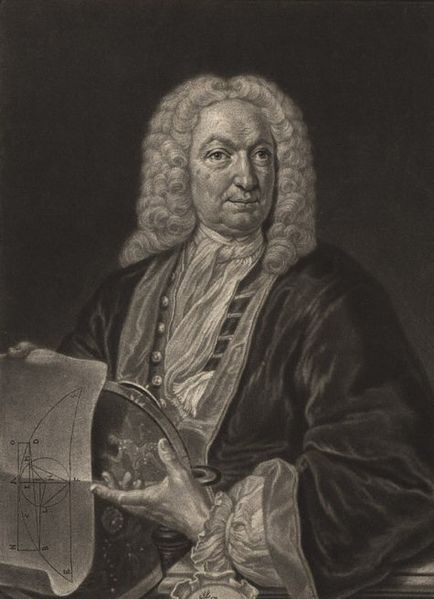<Back to Index>
- Mathematician Johann Bernoulli, 1667
- Author Alexandre Dumas, fils, 1824
- 1st President of the Third Hellenic Republic Michail Stasinopoulos, 1903

Johann Bernoulli (Basel, 27 July 1667 – 1 January 1748) was a Swiss mathematician and was one of the many prominent mathematicians in the Bernoulli family. He is known for his contributions to infinitesimal calculus and educated the great mathematician Leonhard Euler in his youth.
Johann began studying medicine at Basel University. His father desired that he study business so that he might take over the family spice trade, but Johann Bernoulli disliked business and convinced his father to allow him to study medicine instead. However, Johann Bernoulli did not enjoy medicine either and began studying mathematics on the side with his older brother Jacob. Throughout Johann Bernoulli’s education at Basel University the Bernoulli brothers worked together spending much of their time studying the newly discovered infinitesimal calculus. They were among the first mathematicians to not only study and understand calculus but to apply it to various problems.
After graduating from Basel University Johann Bernoulli moved to teach differential equations. Later, in 1694, Johann Bernoulli married Dorothea Falkner and soon after accepted a position as the professor of mathematics at the University of Groningen. At the request of Johann Bernoulli’s father-in-law, Johann Bernoulli began the voyage back to his home town of Basel in 1705. Just after setting out on the journey he learned of his brother’s death to tuberculosis. Johann Bernoulli had planned on becoming the professor of Greek at Basel University upon returning but instead was able to take over as professor of mathematics, his older brother’s former position. As a student of Leibniz’s calculus, Johann Bernoulli sided with him in 1713 in the Newton–Leibniz debate over who deserved credit for the discovery of calculus. Johann Bernoulli defended Leibniz by showing that he had solved certain problems with his methods that Newton had failed to solve. However, due to his opposition to Newton and the study that he had done under the followers of Descartes, Johann Bernoulli also promoted Descartes’ vortex theory over Newton’s theory of gravitation which ultimately delayed acceptance of Newton’s theory in Europe.
In 1724 he entered a competition sponsored by the French Académie Royale des Sciences, which posed the question:
- What are the laws according to which a perfectly hard body, put into motion, moves another body of the same nature either at rest or in motion, and which it encounters either in a vacuum or in a plenum?
In defending a view previously espoused by Leibniz he found himself postulating an infinite external force required to make the body elastic by overcoming the infinite internal force making the body hard. In consequence he was disqualified for the prize, which was won by Maclaurin. However, Bernoulli's paper was subsequently accepted in 1726 when the Académie considered papers regarding elastic bodies, for which the prize was awarded to Mazière. Bernoulli received an honourable mention in both competitions.
Although Jakob and Johann worked together before Johann graduated from Basel University, shortly after this the two developed a jealous and competitive relationship. Johann was jealous of Jakob's position and the two often attempted to outdo each other. After Jakob's death Johann's jealousy shifted toward his own talented son, Daniel. In 1738 the father–son duo nearly simultaneously published separate works on hydrodynamics. Johann Bernoulli attempted to take precedence over his son by purposely predating his work two years prior to his son’s.
In 1691 Johann Bernoulli again fueled the tensions between himself and his brother when he solved the problem of the catenary presented by Jakob. In 1696 Johann Bernoulli proposed the problem of the brachistochrone, despite already having solved the problem himself. Within two years he received five answers, one of which was from his older brother, Jakob. Bernoulli also proposed a fluid energy perpetual motion machine.
Bernoulli was hired by Guillaume François Antoine de L'Hôpital to tutor him in mathematics. Bernoulli and L'Hôpital signed a contract which gave L'Hôpital the right to use Bernoulli’s discoveries as he pleased. L'Hôpital authored the first textbook on calculus, "l'Analyse des Infiniment Petits pour l'Intelligence des Lignes Courbes", which mainly consisted of the work of Bernoulli, including what is now known as L'Hôpital's rule.